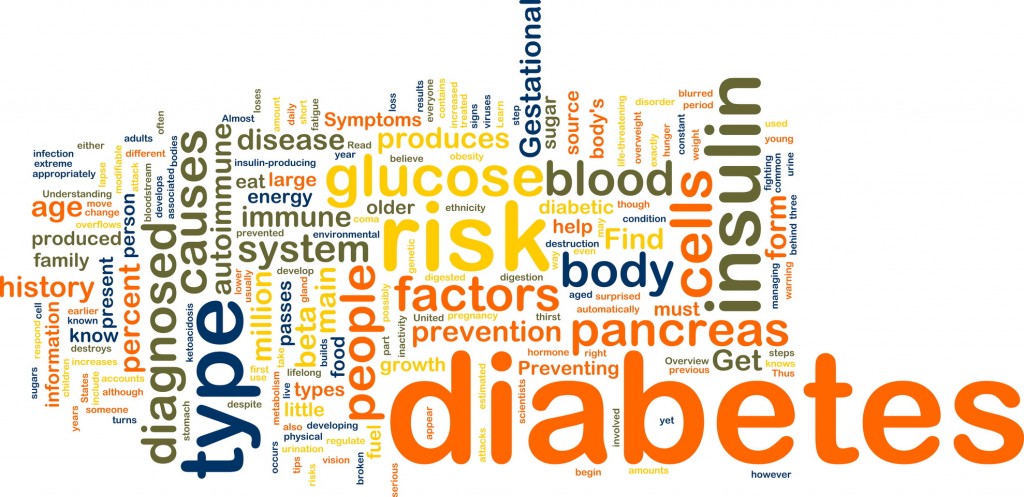 (Warning: This post is about my personal health and only very tangentially related to Buddhism. If you’re a diabetic or pre-diabetic (and who isn’t these days?) it might be of interest; otherwise it might not. I feel the need to share this story with other diabetics who are struggling the way I used to struggle, and since this is my blog, I guess I can post whatever I want. )
(Warning: This post is about my personal health and only very tangentially related to Buddhism. If you’re a diabetic or pre-diabetic (and who isn’t these days?) it might be of interest; otherwise it might not. I feel the need to share this story with other diabetics who are struggling the way I used to struggle, and since this is my blog, I guess I can post whatever I want. )
How does change occur? What allows or permits a fundamental shift in perception, awareness, and sensibility? How does an unresolved problem and source of perennial dissatisfaction finally click into clarity and a solution emerge along with the will, intention, and desire to implement it? As a psychologist this is an open question I’ve lived with all my professional life. What enables people to change? Prochaska’s oft-cited model of Stages of Change (Precontemplation, Contemplation, Preparation, Action, Maintenance), while helpful, is heavily cognitive-behaviorally oriented. It needs to be supplemented with a phenomenological approach that stresses embodied shifts in awareness. ”Readiness to act” isn’t just a constellation of ideas or a set of behaviors; it’s an internal shift in bodily awareness, the way the body as a whole apprehends a problem. Change takes more than an intellectual understanding. It takes the right message at the right time. Your body/mind has to be ready, yearning for it when you didn’t even see it clearly. When the moment comes, the willingness to seize it whole-heartedly is already present.
When I was first diagnosed with adult-onset diabetes 10 years ago, I treated the diagnosis as an opportunity to go to war. I’m a problem solver, and here was a problem to be fixed, or if not fixed, managed. I read everything I could about the disease, got an excellent endocrinologist, spoke with a nutritionist, and followed the recommended diet to a ”T.” My hemoglobin A1C (think of it as a measure of the average amount of sugar in your blood over a three month period) dropped from over 10 to just a tad under 6. My endocrinologist was pleased and so was I, except for the fact that I realized that I could not reach my target goals by following the standard American Diabetes Association (ADA) recommended diet. I needed to eat a lot less to stay within my goals.
Unfortunately, despite my best efforts, my weight kept creeping up and I gradually gained 25 pounds over the next ten years. (Thank you insulin! One of insulin’s main jobs is to convert carbohydrates into fat!), my A1Cs gradually rose to just under 7, and while my fasting blood sugars were not ”too” bad (100-110 mg/dl) my postprandial blood sugars were often well over the ADA recommended target of under 180 mg/dl. If I raised my insulin to get better coverage I experienced frightening hypoglycemic episodes, but if I didn’t raise my insulin my blood sugar went high after even modest meals. I found myself snacking between meals to prevent hypoglycemic episodes, especially on days when I went to the gym. With the type of insulin I was using, two daily injections of a mixture of fast and slow acting insulins, I found I could eat only two meals a day, otherwise my blood sugar numbers were hopeless. I was taking fifty units of insulin a day. I felt perpetually frustrated by my inability to control my illness, and yet resigned to the fact (like a good Buddhist!) that we are all impermanent, and all subject to illness, old age and death. My endocrinologist and I tried to come up with new ways of managing, trying this medication and that. Sometimes I’d give it a try; sometimes I’d be too nervous about using a medication that was new to the market and might have unknown long-term side effects. I stopped measuring my postprandial blood sugars for the most part. What was the point? They were almost always too high, and who wants to be continually reminded of unpleasant news when there/s nothing one can do to prevent it? My fasting blood glucoses were acceptable, and I had to find a way to content myself with that.
Then, about five months ago I came across Jenny Ruhl’s website and blog in which she outlined a different way of managing diabetes. It meant adopting a radical diet which seemed in some ways counterintuitive and at odds with what I already ”knew” (save us from what we think we already ”know”!), taking different forms of insulin and taking them more often, and calculating the number of grams of protein and carbohydrates I ate at each meal and then adjusting the amount of insulin I took down to the half-unit. She wrote clearly and persuasively, but I wasn’t sure how ”fringy” her advice was — the dietary advice was at odds with much that I had read — or how up I was to the regimen she described. It meant a total commitment to a complicated system. Jenny’s blog recommended a book by Dr. Richard Bernstein who was the first to develop these ideas — a hefty 500 page tome. I thought about it and thought about it (Prochaska’s Contemplation Stage), and after a month or so I bought the book and read it, then reread it, then reread it again trying to absorb the enormous amount of information it contained. Then, after more contemplation, I let it sit and percolate. I discussed the idea of changing over my insulin regimen with my endocrinologist (Prochaska’s Preparation Stage), and told her I wanted to think more about it and make a final decision at my next appointment three months from then.
At some point — after having my blood drawn by another doctor for another purpose — a blood draw that I didn’t know would include a blood glucose measure, so I didn’t fast before taking it — I had a postprandial blood glucose of 230 mg/dl. I remembered Jenny Ruhl’s assertion that Hemoglobin A1Cs in the ADA’s recommended ”under 7″ range were no protection against the ravages of diabetes — that it was postprandial highs that caused much of the damage — and I decided I was ready for radical change (Prochaska’s Action Stage) — nervous about it, but ready— just ”getting by” (which wasn’t really ”getting by” — it was just setting the stage for future decline) was no longer good enough.
My endocrinologist wasn’t familiar with Dr. Bernstein’s approach which involves a very low carbohydrate ketogenic diet (VLCKD) — keeping carbohydrates to 30 grams a day and using significantly smaller doses of insulin — but she trusted me and was willing to allow me to go along with it. She wrote prescriptions for a basal-bolus insulin regimen which I started three weeks ago. It’s absorbed all my energy and attention, but it’s also been a complete revelation. My fasting blood sugars now run routinely between 80-90, and often stay below 100 after meals. (If I’ve calculated my insulin correctly, sometimes my postprandial blood sugars are no different from my fasting blood sugars!) I’m not hungry, have no desire to snack between meals, and am enjoying the taste of food more. I’ve lost 10 pounds, mostly around my waist, and my insulin use has decreased by 60%. I feel healthier and more vital, as if the ”qi” in my body is flowing better. (There’s no such thing as ”qi,” is there? My logical ”scientist brain” tells me it’s a metaphor for something else — but then, what is that ”something else”?) I expect that when I go for my three month check-up with my endocrinologist my A1C will be below 6, my triglycerides will be substantially down, and my HDL will be higher.
The most intriguing change is that foods that used to be objects of desire have lost their allure. Good-bye to bread, cereal, grains, beans, pasta, rice, potatoes, fruit, and deserts! When I look at them my first reaction is ”this is poison for my body,” so sticking with the diet has not been a problem. It reminds me of the time 38 years ago when I finally quit smoking. I had an acute case of bronchitis but I was still smoking my usual two packs a day. At some point I noticed the physical sensation of the smoke filling my lungs — a moment of mindfulness. Something inside ”clicked,” and I came to the bodily realization that ”this is poison.” Not an ”idea,” but an embodied certainty. Something that had been a mere intellectual understanding before was now an embodied sense — and the desire to smoke evaporated into thin air. The idea of smoking was now disgusting to me. I threw my cigarettes out. I don’t remember having cravings afterwards. I was done.
I’m grateful to Jenny Ruhl and Dr. Richard Bernstein (who really deserves the Nobel Prize in Medicine for his amazing work!) for providing me with information about a new approach/regimen (actually not so new — Dr. Bernstein’s book came out in 1997) that has given me my life back, but I’m also left in wonder at the miracle of change. How did it occur? If I’d read Bernstein’s book 10 years ago, I would have dismissed it. One doctor I talked with recently told me ”You know, his work is very controversial.” I would have agreed. All the advice I read in standard diabetes books and magazines goes against it. It’s far too radical. It takes too much effort and commitment. Only a rabid true believer can follow it.
And yet, here I am, a rabid true believer.
We’re bombarded by media messages that tell us that we don’t have to give up anything to put our lives in order. We’re told: ”You can still eat the foods you love!” We live in a society that doesn’t believe in renunciation. We can have it all. Except that we can’t. The bad news is that we can’t eat the foods ”we love,” but the good news is that with my bodily shift in awareness, the whole intricate way in which my body now holds its understanding of my illness and wellness, the foods that I love have changed. I’ve renounced my old diet, but there’s no feeling of deprivation or loss. How else is one to feel when one has given up ”taking poison?”
Not to make too much of it, but as I write this I’m struck by how much this is also a form of Zen practice: embodied awareness, doing what’s needed whole-heartedly with undivided attention and effort, again and again, moment by moment, forever.
That’s the story I feel the need to share.
May all beings be well and healthy!
